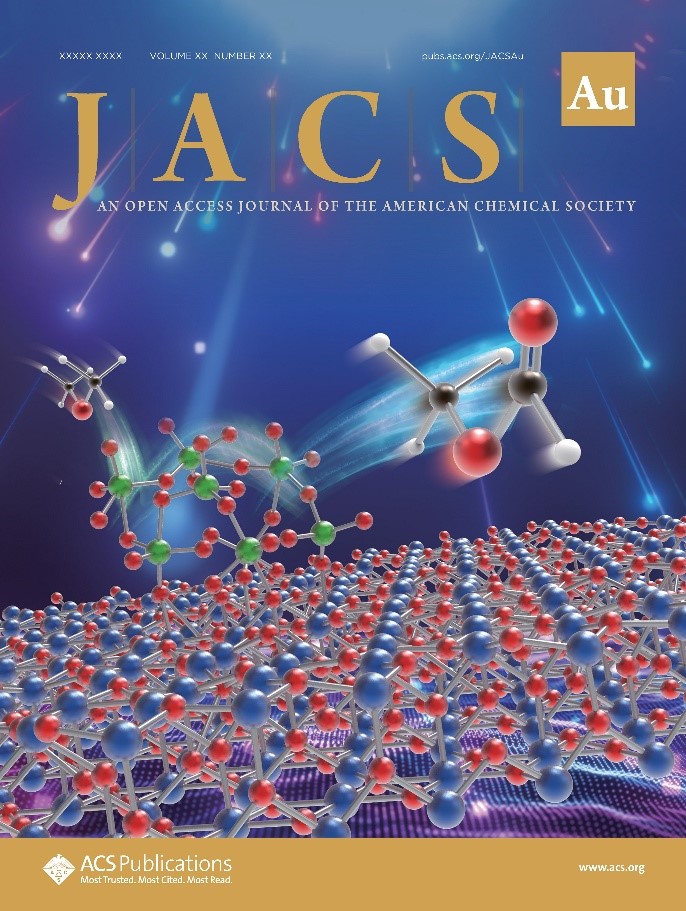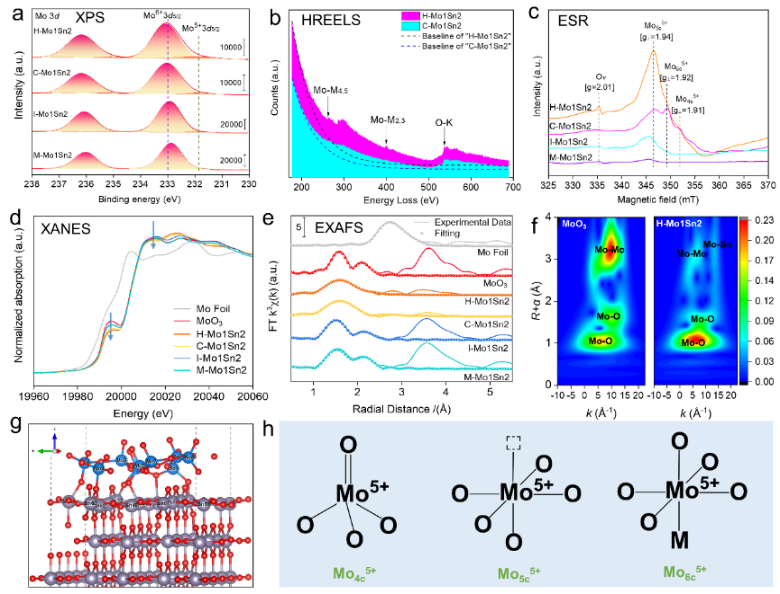This work entitled “Unsaturated Penta-Coordinated Mo5c5+ Sites Enabled Low-Temperature Oxidation of C-H Bonds in Ethers” was published in JACS Au on 19-Oct-2023 (cover).
Selective oxidation of C-H bonds under mild conditions is one of the most important and challenging issues to utilize energy-related molecules. Molybdenum oxide nanostructures containing Mo5+ species are effective for these reactions, but the accurate identification of the structure of active Mo5+ species and the catalytic mechanism remain unclear. Herein, unsaturated penta-coordinate Mo5+5c with a high fraction in MoOx fabricated by hydrothermal method were identified as the active sites for low-temperature oxidation of DME by the characterizations, density functional theory calculations and activity test results, giving MF selectivity of 96.3% and DME conversion of 12.5% at 110 °C. Low-temperature ESR and quasi in-situ XPS with the designed experiments confirm the Mo5+5c species can be formed in situ. The molybdenum located at the pentachronic site is more preferable to significantly promote the oxidation of C-H bond in CH3O* at lower temperature.
Recently, Prof. Zhang’s group has successfully designed and prepared a new Mo-Sn based catalyst for methanol oxidation to dimethoxymethane (DMM). The DMM selectivity reaches nearly 100% with an excellent stability more than 5000 h, indicating a promising potential for industrial application.
“This work broadens and deepens our understanding of the coordination environments of Mo5+ species in MoOx-based catalysts and their crucial role in the oxidation reaction under mild conditions. It also provides a new strategy for designing highly efficient catalysts for low-temperature oxidation of energy-related molecules containing C-H bond in the future”, said Prof. Qingde Zhang.
This work is financially supported by the National Natural Science Foundation of China, the Central Guidance on Local Science and Technology Development Fund of Shanxi Province, the Dalian National Laboratory for Clean Energy (DNL) Cooperation Fund, CAS, CAS Interdisciplinary Innovation Team, the Youth Innovation Promotion Association CAS and the Open Project Program of State Key Laboratory of Physical Chemistry of Solid Surfaces, Xiamen University. The XAFS measurement was provided by the BL14W1 Station in Shanghai Synchrotron Radiation Facility (SSRF), CAS.

Figure 1 The paper selected as the cover of the Journal.

Figure 2 Characterizations of the Mo-Sn catalysts.

Figure 3 Relationship between Mo coordination structure and DME oxidation activity.
About the author:
Qingde Zhang – Dr., Prof., group leader in the State Key Laboratory of Coal Conversion, the
Contact: +86-351-4044388
Email: qdzhang@sxicc.ac.cn
© Institute of Coal Chemistry, Chinese Academy of Sciences, All Rights Reserved
Address: 27 South Taoyuan Road, Taiyuan, Shanxi, P.R.China
Tel: (86)351-4041627 Email: sxicc_en@sxicc.ac.cn